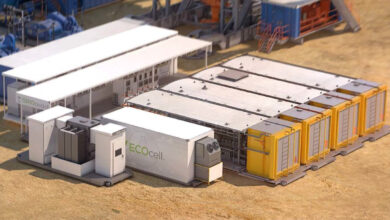Complementary tools, approaches enhance tried-and-true sand control methods
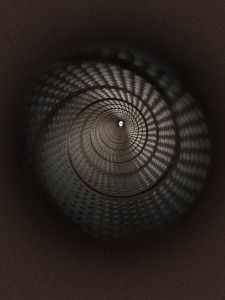
By Joanne Liou, editorial coordinator
Drawing on proven methods and technologies, the latest developments in the realm of sand control strategically capitalize on and enhance what is known to work. The challenge to control unconsolidated sand in the reservoir is met with a portfolio of evolving solutions that are producing better, faster and cheaper results. Mindful of risks and costs, the industry cautiously approaches sand control, managing complexity while reducing nonproductive time (NPT).
“The current thinking in deepwater is selecting the cased-hole completion technique and the processes that not only provides the best, fastest completions but also one that provides the least amount of risks because the daily costs of operating in deepwater for some of these rigs range from $500,000 to a million dollars per day offshore,” Bryan Stamm, technology manager of Schlumberger sand management services, said. “It’s not often that the new technologies are actually the game-changers, but it’s properly managing the packaging of the existing technologies.”
A recurring approach shared across the industry is to evaluate the utilization and application of existing technologies, then combine them with complementary elements and tried-and-true methods to produce even better results. Operators are asking service companies to provide methods that not only control sand production but also maximize productivity and increase recovery.
“Our customers are asking us to look at lower completions from a productivity perspective, not just as widgets,” Suzanne Stewart, Baker Hughes’ product line director for sand control and lower completions, explained. “Our philosophy is to look at the payzone and provide direct connections and enhance when we can in order to maximize the conductivity and to optimize production. That way, we are offering solutions and applications, not just providing widgets.”
The market and need for sand control is omnipresent from the North Sea to West Africa to onshore North America, and it continues to grow as trends point to developing significant fields. In this article, sand control experts from Schlumberger, Baker Hughes and Weatherford International share their approaches and recent developments.
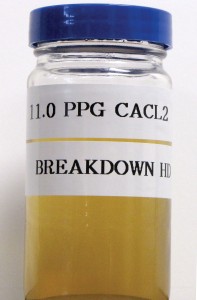
Schlumberger
Proper evaluation and management of sand control methods have led to some of Schlumberger’s latest developments for open-hole and cased-hole completions. Offshore, particularly in deepwater wells, standalone screens or gravel packs are typically used in open hole, while frac-pack treatments are the most common cased-hole sandface completions technique. In both open-hole and cased-hole environments, how to effectively execute sand control with high efficiency and low NPT is the ultimate goal. With multizone applications, the goal is to effectively balance the reward of installation efficiency with the risk of NPT.
An area that has seen development in new technology is wellbore displacement and cleanup. “The chemistries, hydraulics and tools have always been available, but the combination of the three is seldom looked at as a complete system,” Mr Stamm said.
In proper wellbore cleanup, cleanliness is not intuitive to the drilling engineer, but it is of paramount importance to a completion engineer for both making sure the formation is not damaged, as well as making sure debris is removed from the wellbore. Debris could cause NPT associated with completion hardware.
M-I SWACO’s WELL PATROLLER and WELL SCAVENGER tools have been effective in removing debris in cased-hole completions and illustrate well cleanliness at surface. The former acts as a downhole filter during the displacement operation, removing any residual debris and validating on surface how well the displacement performed. The latter is a vacuum debris removal tool that provides reverse circulation at the end of the workstring to enhance debris removal, especially around sensitive areas or equipment, such as open perforations, formation isolation valves or temporary plugs. Captured debris is recovered at surface.
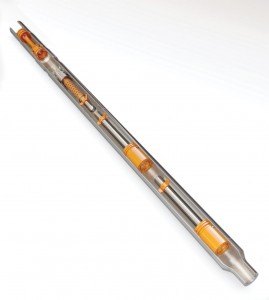
Sand control is part of the bigger picture, and drilling engineers are as important to the productivity of the well as engineers responsible for the completion design. “The highest value that we’ve seen is when there is an integrated team working for a common goal, not just individual objectives, such as ‘let’s just drill the well without any regard for completion,’ or ‘let’s complete the well without any regard for how it was drilled,’” Mr Stamm said.
In open-hole completions, breaker technology is a key aspect of managing the transition from the drilling phase through the completion phase and into the production phase. “But the filter cake treatment goes in combination with the fluid with which you drill in the first place,” Charles Svoboda, director of wellbore productivity, business development at M-I SWACO, a Schlumberger company, explained. “The breaker technology and the reservoir drill-in fluids have to be specifically designed together with the common objective of successfully drilling the well, completing it and then successfully producing from the well.”

In a 2011 case study offshore the east coast of Trinidad, the company’s BREAKDOWN HD breaker system enabled filter cake removal in a high-permeability open-hole gravel pack (OHGP) completion. The idea was to remove the filter cake in a gentle manner and not be too aggressive by compromising the filter cake integrity before the completion process was finished. The system allows users to get to higher densities and work in divalent chemistry – a calcium-based brine, Mr Svoboda explained. “The composition of BREAKDOWN HD helps us remove some of the more difficult polymer components of the filter cake that are sometimes used.”
Starch polymers, for example, break down easily with an enzyme treatment, but other fluid loss control and viscosifying polymers are more troublesome.
In the Serrette project in Trinidad, the wells had open-hole production intervals varying from 150 ft to 500 ft and contained high-permeability rock ranging from 1 to 3.5 Darcy. The reservoir drill-in fluid was engineered to limit fluid invasion and formation damage; however, there were indications of a high probability of severe production-restricting screen and gravel-pack plugging, making the placement of the filter cake removal treatment necessary during the placement of the OHGP.
To minimize interaction between filter-cake removal chemicals and the OHGP fluid, the breaker system was implemented to minimize interaction with the divalent brine system, retain adequate breaking power to remove the filter cake and maximize productivity. The final mixing and pumping process proceeded without issues or NPT.
“It’s an extension to where we’ve been,” Mr Svoboda said. “We’re now able to work in higher densities. We’re able to remove filter cakes that before hadn’t been removed by previous technologies.”
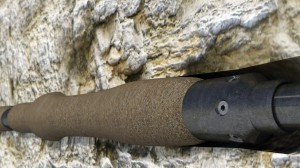
Baker Hughes
Fiber-optic technology is no stranger to the industry, but its use for well and reservoir surveillance has evolved in the past decade. Baker Hughes and a major operator have collaborated to develop a technology to monitor the deformation of well tubulars and casing, which has expanded to monitoring sand screens.
The real-time compaction monitoring system enables the monitoring of the compaction-related deformations of the well. “Multiple fiber-optics string sensors give operators the ability to gain real-time information, allowing them to make changes,” Ms Stewart said. “The biggest benefit is that the system can monitor downhole conditions and then adjust to rectify a problem before it becomes a failure.”
The operator deployed the system for the first time with a downhole fiber-optic wet connect in the Gulf of Mexico (GOM) in November 2011. The system was applied to a cased-hole frac pack and was run on a 3 1/2-in. fiber-optic screen, inside 7 5/8-in. casing. Because the application was developed with a downhole fiber-optic wet connect, “we could run the upper completion and connect, so the fibers meet downhole,” Ms Stewart explained.
The fiber-optics string engages sensors at the sand face, which allows operators to continuously monitor the reservoir with fiber optics in real time. The technology uses Bragg gratings, which is a short segment on optical fiber that reflects particular wavelengths of light and transmits all others, she continued.
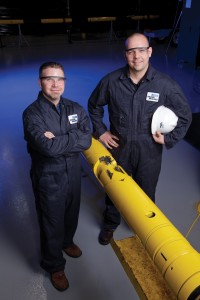
“Each grating is essentially a strain gauge, and when strain is applied to the sensing fiber, the fiber is helically wrapped around the completion to be monitored, such as casing or sand screen, and the individual gratings in the fiber stretch or contract. This strain causes a shift in the wavelength of light reflected and produces strain measurements along the length of the fiber containing the Bragg gratings.”
Bragg gratings can offer an advantage over traditional electronic gauges in harsh environments because it can withstand vibration and heat, making it more reliable.
One of the newest sand control systems, GeoFORM, is based on shape memory polymer (SMP) technology. It has been engineered to potentially replace gravel packs in open-hole completions.
SMPs, introduced by Baker Hughes in 2011, resemble the material used in automobile bumpers. If there is a dent in the bumper, the repair usually involves applying heat to the area to make the dent pop out to its original form.
“SMPs have the ability to effectively remember the shape in which they were originally formed,” Ms Stewart explained. “We take the SMP, compact it to a smaller size, and then we effectively freeze it in that condition and run it in hole and allow it to go back to its original shape.” A pipe with an SMP is run in the open hole, where it can regain its original size and effectively fill the annulus. SMPs replicate a filtration system like a gravel pack without having to pump gravel.
Baker Hughes has undertaken seven SMP field trials to date in areas including Europe, offshore US and Southeast Asia, Ms Stewart said.
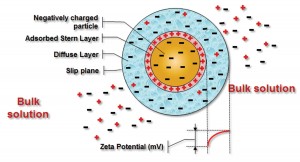
Weatherford
Conceiving the downhole production enhancement business unit, Weatherford combined chemical sand control with its water conformance technology in March. “Sand production and water production go hand in hand,” Ron van Petegem, product line director of downhole production enhancement for Weatherford, said. “There are many reservoirs out there that really don’t produce any sand. The rock may have even failed already, but when water production breaks through the capillary, pressures change. You may lose other cementation from clays and then comes the sand.”
Weatherford’s new approach looks at sand and water performances in tandem. Although the two are not necessarily complementary, they also are not mutually exclusive.
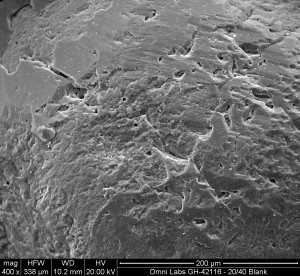
SandAid, originally field-tested in Romania and introduced to the market in June 2009 in the GOM, is one of Weatherford’s latest technologies and is still evolving in its makeup and application. The treatment incorporates Weatherford’s patented zeta potential altering chemistry, which in itself is not new to industry, but to modify the zeta potential for the purpose of sand control and increasing the maximum sand free rate is. The modification creates an ionic attraction between particles and prevents these particles from migrating while allowing for adaptation to changes in formation stresses. “Sandstone is anionic, negatively charged, and SandAid is mostly catanionic, so when SandAid is pumped into the reservoir, the positively charged SandAid and the negatively charged sand are attracted to each other, and SandAid adsorbs to the partile,” Mr van Petegem said.
The technology is typically deployed by bullheading it down the production tubing or coiled tubing; many operators prefer to bullhead the treatment down the production tubing because of the ease of placement, Mr van Petegem said. The typical treatment consists of a brine pre-flush, followed by the SandAid treatment and a brine post-flush. “We mix on the fly, and it’s an extremely simple process,” he explained. “It also means that in almost all cases, the fluids that we pump into the well are Newtonian, and as such rate diversion becomes simple and reliable, treatments are typically pumped at matrix rates just under frac pressure.”
Part of rate diversion implies that higher-permeability zones will receive more treatment than lower-permeability ones. It is essential that the chemicals do not over-treat part of the matrix, and more SandAid solution applied does not mean a thicker coating but translate into a deeper treatment, according to Weatherford. The philosophy of the design takes into consideration the minimum amount of treatment needed for lowest-permeability of the target zone. “That’s one of the key reasons for our success,” Mr van Petegem said. “Thus, during a normal treatment, the high-permeability rock will receive a deeper treatment than the low-permeability rock.”
SandAid chemistry is formulated so that only a certain amount is adsorbed to the rock.
Weatherford has applied the technology to more than 200 zones worldwide offshore and on land. In one of its first applications in the GOM, the company teamed up with an independent operator in mid-2009, and through June 2011, the treated GOM well produced at up to three times its previous maximum sand-free rate. Prior to the treatment when the well’s performance initially declined, a number of sand control options were considered. A workover with gravel-pack or frac-pack installation was deemed too costly and not fit to the existing completion configuration. SandAid technology was selected because the treatment could be mixed with seawater and bullheaded down the production tubing and because it would not reduce permeability.
Within 24 hours of application, the well was put on production, and as of April, was still producing sand free.
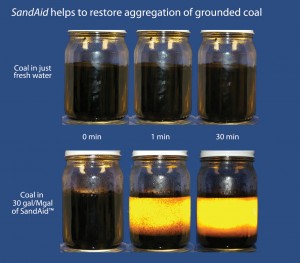
“Today we have a good, reasonably well-defined operating envelope,” Mr van Petegem stated, “but as we do more jobs, we continue to learn and expand our operating envelope.”
Taking a preemptive approach to sand control, the deployment of the technology is being rerouted. Weatherford is pursuing a concept called rock strength conservation, where sand control technologies are being applied to prevent failure instead of waiting for the rock to fail.
Working with a major operator and through internal testing, indications are that by applying the SandAid technology prior to water breakthrough, deeper reservoir depletion may be possible without sand production. “Essentially all sand control methods that we have today are reactive,” Mr van Petegem stated. “We may choose to install sand control systems proactively, but in essence, they do not really start operating until after the rock fails and sand becomes mobile.”
The proactive approach is a departure from the conventional sand control philosophy and would attempt to conserve and possibly prevent sand production in the first place, Weatherford believes, making it impervious to the change that is typically caused when water production starts.
Weatherford plans to do field trials for this reservoir conservation concept by mid- to end-2012 and has seen interest from operators in West Africa and the GOM.
In a separate development, Weatherford is working with operators to pump the SandAid chemistry from a floating, production, storage and offloading (FPSO) vessel through a flowline back into the well. “The considerations there are the cleanliness of the flowline itself because flowlines build up debris,” Mr van Petegem said. Weatherford is working with an operator to find the best way to clean the flowlines from the FPSO down to the well. “This could potentially allow failed deepwater wells without an intervention vessel do a sand control treatment remotely through flowline,” he added.
Conclusion
Methods of bringing unconsolidated formation sand under control are not confined to the completion phase but also affect the drilling and production phases. The industry’s approach to sand control and traditional methods are evolving to maximize proven technologies to produce the most desirable and profitable results.
“Baker Hughes does not have an allegiance to any one particular technology,” Ms Stewart stated, “which allows us to truly evaluate the payzone and to provide the best solution.”
WELL PATROLLER, WELL SCAVENGER and BREAKDOWN HD are marks of Schlumberger. GeoFORM is a trademark of Baker Hughes. SandAid is a trademark of Weatherford.



